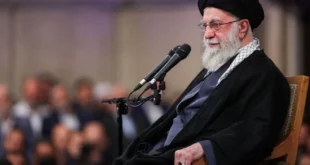 Rasha Mohammed is always looking for new hijab styles.
Rasha Mohammed is always looking for new hijab styles.
When she’s not watching Egyptian fashion TV, Ms. Mohammed is checking out what other young Muslim women are wearing on the street or on the subway.
“If I like any of their ways of putting [on the] hijab, I can ask them how to do it,” she says of other women she sees in Cairo’s Metro.
Mohammed’s two head scarves – aquamarine blue peeking out from under a sea foam green – match her knee-length dress over the top of blue jeans. Her outfit screams fashionista. The flower-shaped pins holding the scarves match the green and blue flower rings on her hands.
“Ah, it’s a must!” she says, looking at the rings. “I’m wearing blue pants, so the bottom scarf is blue, and the top scarf is green because my shirt is green,” she explains one recent afternoon at a downtown Pizza Hut.
Mohammed is like a growing number of young Muslim women in Egypt who have taken to transforming the hijab, the Islamic head dress, from tradition to fashion statement.
As head scarves have come to mean many things to Muslims and non-Muslims alike – a sign of piety, a declaration of identity, a center of controversy, a political statement – in Cairo today they sparkle.
And Malak Company – a hijab house of style – is banking on its popularity.
“Egypt is a Mediterranean country … so we are a little bit affected by European styles, and when it comes to hijab and it spread to this country, people refuse to wear the black abaya and scarf,” says Sharifa Barakat, owner of Malak, in her Cairo factory that is lined with rolls of sequins and bags of beads.
When she started her company eight years ago, it was one of only two companies in Egypt manufacturing head scarves, she says. At the time, she says, Egypt was on the cusp of the hijab trend.
“Four or five years ago there was a big change. It used to be here and there [that you would see] the hijab, but now almost everyone wears hijab … The people are beginning to be more religious,” says Ms. Barakat of the region’s growing religious identity after decades of in secular, pan-Arab themes.
“When I began … people criticized me and said, ‘How can you make a business in this?’ But now there a lot [of companies] in the industry.”
Women used to cut the cloth themselves for the scarves and fashion their own hijabs, she says. And still many women prefer the plain, simple wrap of fabric.
Hijab salesmen – and most are men – agree that business has boomed in the past few years. Ahmed Ali says the hijab market in Cairo, where he works, has transformed from shops that sold all clothing to hijab central.
And the salesmen keep a close eye on what’s selling well. Cotton is big in summer. A sequined scarf is to be worn only with a plain shirt, or vice versa. And the more a scarf sparkles, the more formal it becomes.
In these downtown, working class markets, scarves go from anywhere between $1 to $6.
“We have a lot of women here that care about their appearance and because it’s cheap, [for as much as $6] you can buy a scarf every day,” says Mr. Ali, a scarf pin in his mouth.
Across town in the chic City Stars mall, scarves can run as much as $18. Lubna Mohammed has worked at The Tie Shop for more than two years and says she sees sequins making an exit as the new summer fashions come out. Now, she says, it’s wooden beads that will be the rage.
“Because summer began, there are a lot of colors and a lot of customers, so we have to have new styles,” she says.
As more women began to wearing the scarf, they experimented with new ways to tie it, such as braiding the ends of the scarves or pinning them up to look like flowers. There is even a magazine called Hijab, one of several that feature tying techniques and scarf styles.
“Girls want always a change, something to attract eyes of the young men so she wants to be different but still wear hijab,” Barakat says.
At the downtown Pizza Hut, Zahar Hossam shares the booth with Mohammed. She wears just one beige scarf pinned neatly under the chin and adorned with a few minimalist sequins.
“There are a lot of fashions, but anybody can select [for herslef]. I prefer one layer,” says Ms. Hossam. “I am an engineer, and there are a lot male colleagues, so I want to be very formal with them.”
But, with a laugh, she admits there is another reason. She is married, she says. “So I don’t care about fashion.”
 Eurasia Press & News
Eurasia Press & News



